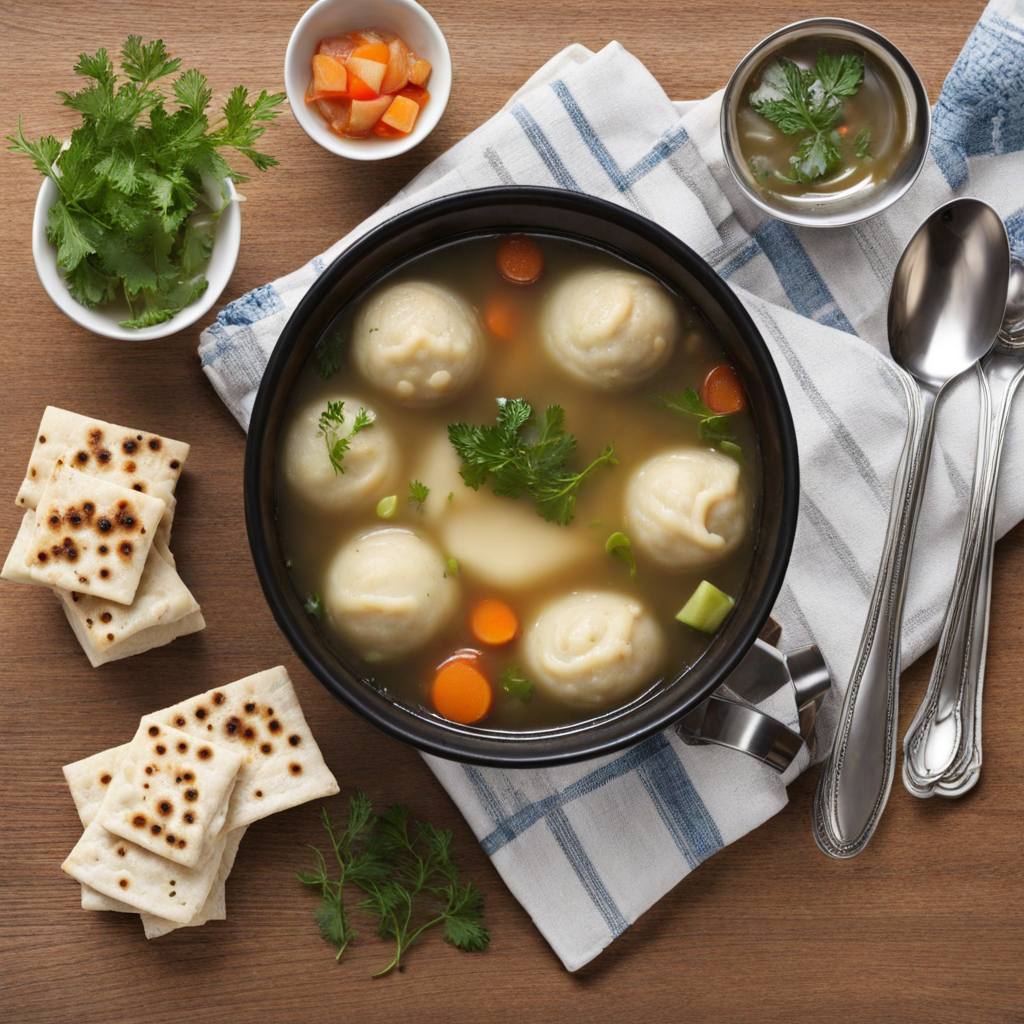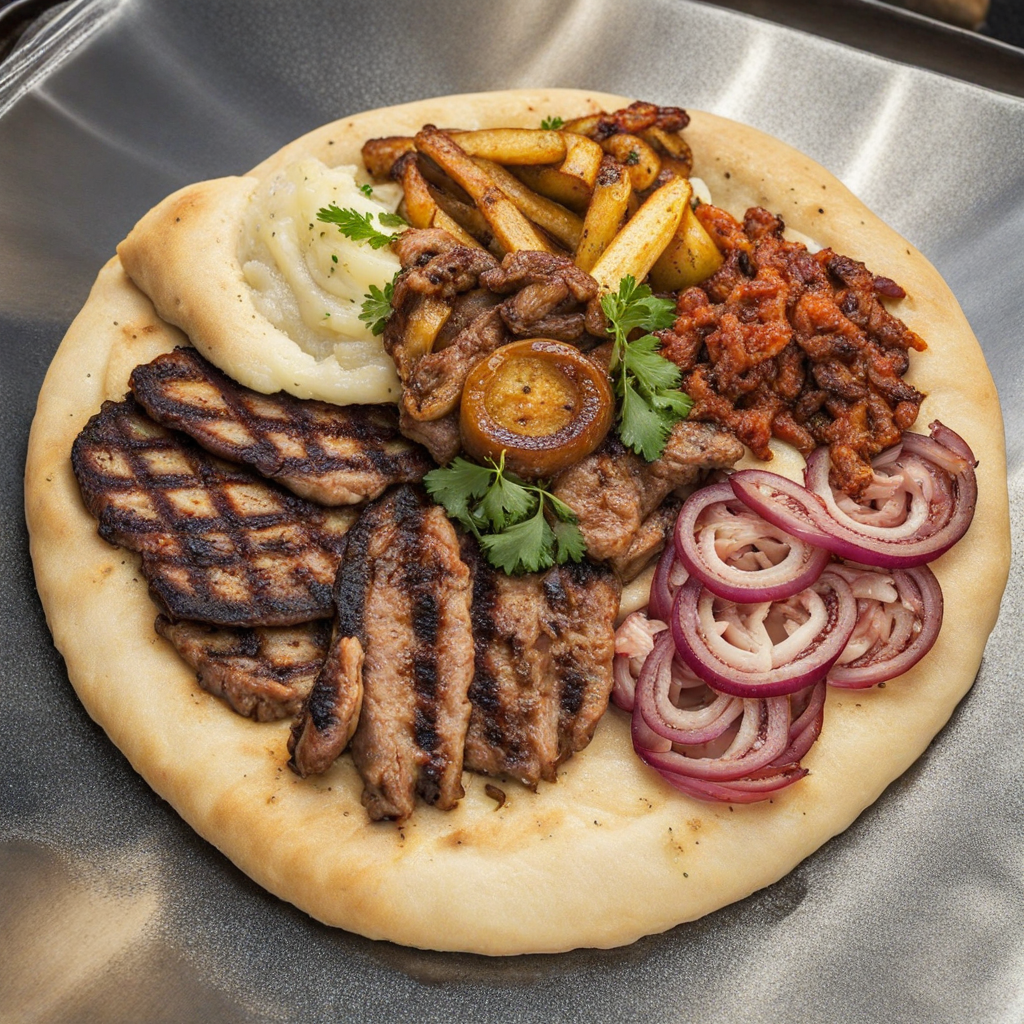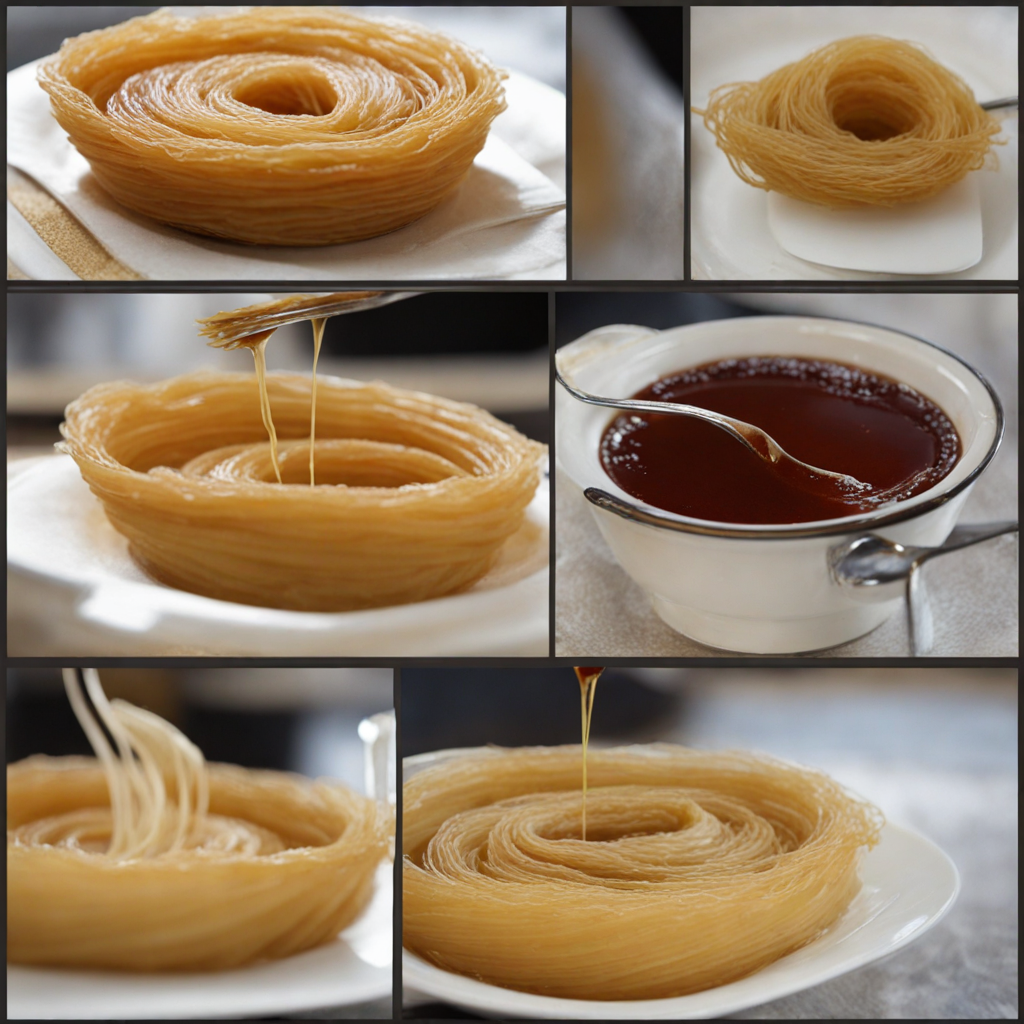Sufganiyah
Sufganiyah is a delightful fried doughnut that hails from Israel, particularly popular during the festival of Hanukkah. These sweet treats are typically filled with a variety of fillings, most commonly a rich and velvety fruit jam, such as strawberry or raspberry, but also often with a creamy custard or chocolate. The dough itself is made from a yeast-based recipe, which gives it a light and airy texture, perfectly complementing the sweet filling. After being fried to a golden brown, they are generously dusted with powdered sugar, adding a hint of sweetness to every bite. The experience of enjoying a sufganiyah is one of pure indulgence. As you take a bite, the warm, soft outer layer gives way to the luscious filling, creating a burst of flavor that dances on your palate. The combination of the crispy exterior and the gooey interior makes for a delightful contrast in textures, while the sweetness is perfectly balanced, satisfying those with a sweet tooth without being overly cloying. This treat embodies the spirit of celebration and togetherness, often enjoyed with family and friends during the festive season. In recent years, sufganiyot (the plural form) have seen a surge in creativity, with various gourmet versions emerging in bakeries across Israel and beyond. From unique fillings like pistachio cream to interesting toppings like shredded coconut or chocolate glaze, there’s always something new to discover with each visit to a bakery. Whether enjoyed fresh and warm or as a special treat during the holidays, sufganiyah is a must-try delicacy that encapsulates the joy and flavor of Israeli cuisine.
How It Became This Dish
Origin of Sufganiyah The sufganiyah is a traditional jelly-filled doughnut that has become synonymous with the Jewish festival of Hanukkah. Its origins can be traced back to the Ashkenazi Jewish communities of Eastern Europe, where fried pastries were a popular treat during festive occasions. The name "sufganiyah" itself derives from the Hebrew word "sufgan," which means "to absorb," referring to the way the dough absorbs oil during the frying process. This culinary delight is believed to have been inspired by the German "Berliner" or "Krapfen," which are also deep-fried pastries filled with jam or custard. The connection between sufganiyot and Hanukkah is deeply rooted in the historical events commemorated during the holiday. Hanukkah celebrates the Maccabean Revolt against the Seleucid Empire in the 2nd century BCE and the miracle of the oil, where a small amount of oil lasted for eight days in the rededicated Temple in Jerusalem. As a symbol of this miracle, fried foods are consumed during the holiday, with the sufganiyah emerging as a particularly popular choice, representing both the miracle of oil and the joy of the festival. \n\n Cultural Significance The sufganiyah transcends its status as a mere dessert; it has become a symbol of Jewish identity and cultural celebration. In Israel, the onset of Hanukkah is marked by the aroma of fresh sufganiyot wafting through the air, as bakeries and households prepare to indulge in this delectable treat. The tradition of eating sufganiyot has evolved, becoming an integral part of Israeli culture, where it is often shared among family and friends during the holiday. As Hanukkah gained prominence in the Jewish calendar, particularly in the 20th century, the sufganiyah became a culinary staple in Israeli households. Today, it is not only a dessert but a means of connection to Jewish heritage, rituals, and communal celebrations. It exemplifies the spirit of the holiday and serves as a reminder of resilience and miracles, resonating deeply with the Jewish people's historical narratives. \n\n Development Over Time The evolution of the sufganiyah has seen it transform from a simple jelly-filled pastry into a diverse array of flavors and fillings. Initially, the classic version was filled with a sweet fruit jam, typically strawberry or raspberry. However, as the years progressed, bakers began experimenting with various fillings, leading to the creation of innovative flavors such as chocolate, dulce de leche, and even savory options filled with cheese or spinach. The rise of gourmet bakeries and the influence of modern culinary trends have also led to the emergence of artisanal sufganiyot. These newer versions often boast unique toppings, such as powdered sugar, glazes, and an array of decorative elements, making them visually appealing as well as delicious. Additionally, the trend of “sufganiyah bars,” where consumers can customize their doughnuts with different fillings and toppings, has gained popularity in recent years. \n\n Sufganiyah in Israeli Society In contemporary Israel, the sufganiyah is not just a seasonal treat; it has become a cultural phenomenon that reflects the vibrant and dynamic nature of Israeli society. During Hanukkah, people of all ages come together to fry and enjoy these doughnuts, making it a communal activity that strengthens family bonds and friendships. The process of making sufganiyot at home is often accompanied by laughter, storytelling, and the sharing of traditions passed down through generations. Moreover, the sufganiyah has found its way into various cultural expressions, including literature, art, and media. It has been featured in songs and poems, celebrated in festivals, and even documented in cookbooks as an essential component of Jewish culinary heritage. This versatility showcases not only the adaptability of the sufganiyah but also its importance as a cultural artifact. \n\n Global Influence As Jewish communities have dispersed around the world, the sufganiyah has traveled with them, adapting to local tastes and culinary customs. In countries such as the United States, Canada, and beyond, Jewish bakeries have embraced the tradition, offering their own variations of the classic doughnut. In some places, the sufganiyah has been integrated into broader holiday celebrations, often served alongside other traditional foods like latkes (potato pancakes). The globalization of food culture has also led to the fusion of the sufganiyah with other culinary influences. This has resulted in exciting new interpretations, such as the sufganiyah being filled with matcha cream, or topped with exotic spices. The creative possibilities are endless, as chefs and home cooks alike continue to innovate, ensuring that the sufganiyah remains relevant and appealing to new generations. \n\n Conclusion The sufganiyah stands as a testament to the resilience and adaptability of Jewish culinary traditions. From its humble beginnings in Eastern European kitchens to its status as a beloved symbol of Hanukkah in Israel and beyond, the doughnut reflects the spirit of celebration, community, and cultural identity. Its evolution over time, influenced by both tradition and modernity, demonstrates the ways in which food can connect people to their heritage while also allowing for creativity and innovation. As Hanukkah approaches, the anticipation of indulging in fresh, warm sufganiyot brings joy and excitement, reminding us of the importance of shared experiences and the sweetness of life’s blessings. Whether enjoyed in a family gathering or a bustling bakery, the sufganiyah continues to be a cherished part of Jewish cultural heritage, symbolizing not only the miracles of the past but also the joy of togetherness in the present.
You may like
Discover local flavors from Israel







